Last Updated on August 19, 2023 by Robert Price
Relatively speaking, Norwood 3 is not a bad place to be!
As a Norwood 3, you still have many stylistic options.
And there’s a good chance your hair loss is treatable.
It’s perhaps the most common type of hair loss, too, and it often goes undetected by the general public.
That’s right.
Most people aren’t paying attention to your receding hairline!
In this detailed but reader-friendly post, I will:
- Cover everything you need to know about living a full life as a Norwood 3.
- Review the basics — the definition of the hairline, common variations, etc.
- Discuss your six best treatment options, if desired.
- Help you determine if a hair transplant is an option for you.
- Reveal five player profiles from the Norwood 3 celebrity roster; these guys prove once and for all that a little recession can be sexy as hell!
- And much more.
Now, starting with the basics, here’s everything you need to know about receding hairlines.
Norwood 3 Classification
Norwood 3 indicates significant temporal recession.
In his seminal 1975 research paper, Norwood noted that class 3 was the first class sufficient to represent baldness (source).
But relax.
You’re a long way from being “bald.”
Six Common Type 3 Variations
In my experience, there are at least six variations of the Norwood type 3 pattern. You could call most of the patterns “advanced type II” patterns, if you prefer.
1. The M-Shaped Type III Pattern – This is not a “full-blown” Norwood III pattern. Many men with early hair loss will notice their hairline corners collapse and move inward, as their hairline goes from a V-Shape — the typical shape of a mature hairline — to an M-shape. Tom Hanks (more on him later) is a good example of a celebrity with this variety of hair loss.
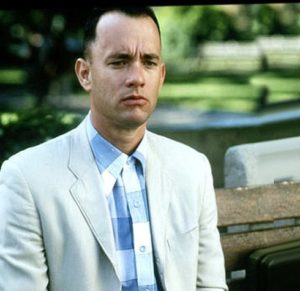
Tom Hanks with his signature “McDonald’s M” or “Mickey Mouse” hairline in Forrest Gump.
2. The U-Shaped Type III Pattern – Another mild type III (or advanced type 2) pattern. Bryan Cranston of Breaking Bad fame is a good example of a celebrity with a U-shaped hairline. His hair loss isn’t particularly noticeable when he grows it out.

Aaron Paul, Cranston’s co-star from the aforementioned Breaking Bad, also appears to have a U-shaped hairline.
3. The Extra Large V-Shaped Pattern – Some men retain a mature hairline shape but recede beyond the “mature” point — that’s starting at approximately a finger width above your highest forehead wrinkle, by the way. Conan O’Brien appears to have this hairline.
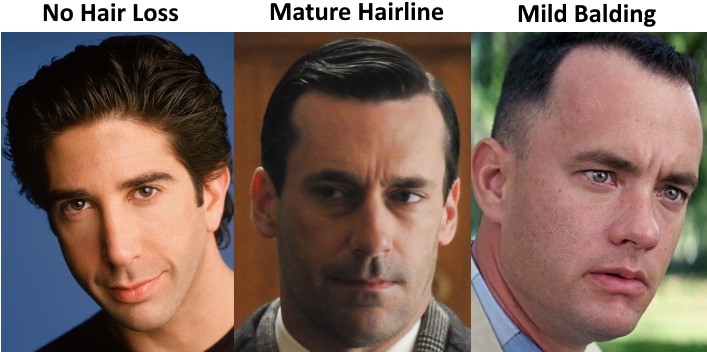
For more information on the hair maturation process, check out my in-depth mature hairline post.
4. Full-Blown Norwood 3 (The “Island” of Hair) – This is the classic, most advanced variation of the hairline that’s super common. The singer Sting has sported this hairline for many years, as has Jackass star Johnny Knoxville, among many others.

Former president Richard Nixon famously sported an “island” type 3 Norwood pattern.
5. The Bald Spot Norwood 3 – Any Norwood 3 with a bald or thinning spot on the crown is considered a Norwood 3V pattern.
6. The Norwood 3 A– This pattern shows more frontal loss compared to the standard NW 3 variation.
The Top Six, Norwood 3 Hair Loss Treatment Options

If you’re concerned about hair loss, I’d definitely suggest seeing a doctor. Here, I discuss the pros and cons of seeing a dermatologist vs. a hair restoration surgeon.
As a Norwood 3, you’ll likely have many hair loss treatment options. Which option(s) are best for you will be contingent on the following:
- Your Genes – With a genetics review and exam, you may be able to determine if Norwood 3 is your end “destination” on the Norwood scale. If that’s the case, you’ll have many options. But if you think you’re just making a quick pit stop at Norwood 3 and that you’ll move onto balder places in the near future, then a more “aggressive” treatment approach may be needed.
- Degree of Thinning – You should consider how much active thinning you have going on. The more thinning, the more serious the problem is likely to be.
Your main treatment options are as follows:
1. Propecia/Finasteride
Many doctors will recommend finasteride, AKA Propecia, to their Norwood 3 patients. It’s a highly effective drug that can stop or dramatically slow hair loss almost 90% of the time.
It also has some undesirable side effects, primarily of the sexual variety. Given that Norwood 3 is typically on the “mild” end of the hair loss spectrum, some may view Propecia as an extreme treatment option for men with simple, receding hairlines. Others would disagree.
If you’re considering using Propecia, I’d suggest reading my in-depth article on the subject: A Long, Hard, and Honest Look at Propecia – Is It Worth the Risk?
2. Minoxidil
Minoxidil can help thicken and revitalize your thinning hair follicles. It can also help decelerate your hair loss over time.
It’s generally not considered to be as effective as Propecia and comes with potential side effects as well, primarily skin irritation. More serious absorptive side effects are also possible, such as chest pain, swelling of the hands or feet, and fainting, to name a few.
In a 2012 study involving 984 men, minoxidil was shown to be moderately to very effective in about 84% of the participants.
Minoxidil is generally more effective on the crown than the hairline. Moreover, it won’t help treat completely bald areas, either on your temples or crown. I have a Norwood type 2V pattern (a slight thinning spot at my crown). I’ve been using minoxidil since 2021 and have enjoyed favorable results so far.
3. Laser Therapy
Laser therapy is a relatively new treatment option for male pattern hair loss. At this point, it’s mostly viewed as a supplementary option that may work with other, primary treatment options like minoxidil and finasteride.
Some small studies have been conducted, which showed that laser therapy helped improve patient hair counts and thickness. Again, it’s still a pretty new option, and some hair loss specialists contend that it doesn’t work at all.

For those interested, I recently posted in-depth review of laser therapy as a hair loss treatment.
4. PRP
PRP is another new kid on the hair loss treatment block. It has its advocates and its deniers in the hair loss community, but early research has shown that it has potential as a reasonably effective weapon against androgeic alopecia, AKA male pattern baldness.
Basically, PRP helps thicken thinning hair follicles. It won’t work on bald spots (nor will any other treatment aside from hair transplantation). PRP is NOT a permanent solution and typically only works for anywhere from 2-12 months, depending on the solution being used.
So if you have favorable results with PRP, you’ll need continued sessions in order to maintain those results. You can read my in-depth PRP article here.
5. The Natural Route
Some natural treatments show promise and may help slow the progression of hair loss. Pumpkin seed oil, Saw palmetto, and rosemary oil are a few natural remedies available that may be worth considering. Are any of the natural remedies going to be as effective as Propecia or Rogaine? I would say it’s highly unlikely, but they also typically come with fewer side effects.
Fun fact – most “natural” remedies for hair loss are scams.
6. Hair Transplantation
Hair transplantation is often a great option for Norwood 3 patients, particularly for those who either have their hair loss under control or who stop receding at Norwood 3. If you choose a skilled doctor and are a good candidate for a hair transplant, there’s a decent chance you can have your receded areas filled in with just one procedure.
How Much Does a Hair Transplant Typically Cost for Norwood 3 Patients?
Five to fifteen thousand dollars is kind of the general price range for hair transplants in the US, depending on the surgeon you choose, your location, degree of hair loss, and a variety of other factors.
Costs for hair transplants vary widely. But since Norwood 3 is on the milder end of the hair loss spectrum, the cost may be on the lower end of the scale — say in the five to ten thousand dollar range, approximately.
There are international hair transplant “hubs” such as Istanbul, Turkey, where you may be able to find a skilled and reputable surgeon to perform your procedure for around two thousand dollars, perhaps even less. Proceed with extra caution if you elect to go the discounted route though, as the hair transplant industry is notoriously unregulated and there are many “scam” operations out there.
As a Norwood 3, you may be able to achieve your desired results with one procedure, assuming you have realistic expectations. It’s also possible that you’ll need/want additional procedures to fully restore your hairline.
If you’re considering a hair transplant procedure, I’d suggest reviewing the infographic below…
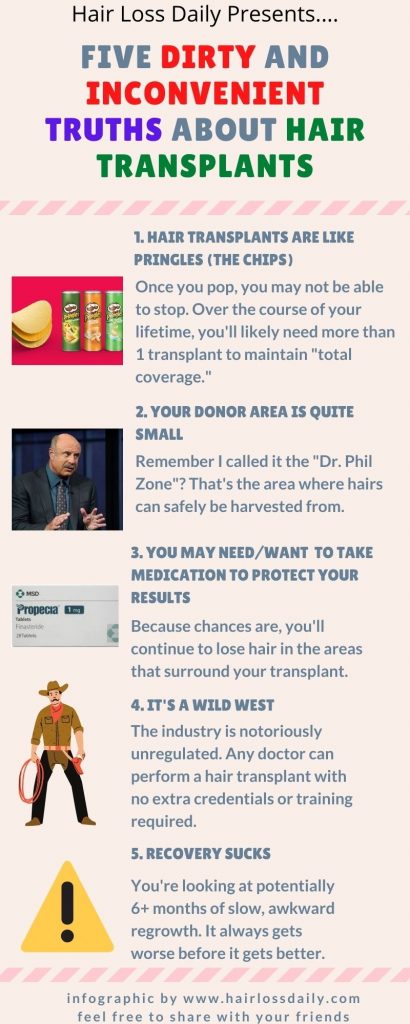
To review the full list, see my article reviewing the top 10 dirty and inconvenient truths about hair transplants.
Top 5 Norwood 3 Style Tips
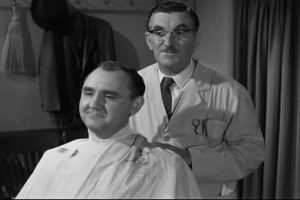
Floyd the Barber of the Andy Griffith Show, working on a Norwood 3 customer.
The nice thing about the Norwood 3 hairline vs. higher classes of balding is that it generally frames the face. Look at someone like Judd Law. He’s receded beyond Norwood 3, but he had a receding hairline for ages, and it always enhanced his visual “profile” and overall appearance — perhaps until very recently! Anyway, here are my five best Norwood 3 style tips…
1. Bangs are Your Friend
They can help give you some coverage in the “problem” areas. Be careful though; you don’t want to venture into the comb over zone!
2. Long Hair is Probably Still an Option
Think you can’t grow out your hair because you’re a Norwood 3? Think again!
Many Norwood 3’s look great with long hair. I call Norwood 3 with long hair the receding hairline rocker look!
Aging rock stars like Joe Walsh and Timothy B. Schmit of the Eagles still look awesome with long hair, as did Tom Petty (RIP). They tend to comb their hair down the center which basically covers up their receded and/or thinning temples. Will Forte of Last Man Standing fame sports long hair these days — he’s receded quite a bit, too, but with the extra-long locks, you’d never know!
3. When in Doubt, Keep it Clean
You don’t need to hide anything. Norwood 3 is nothing to be ashamed of! It’s a normal type of hair loss at pretty much any age. So if you’re not sure what you want to do, stylistically, just go for a look that’s somewhat short and neat. You can buzz your head if you’d like, too.
But, in my humble opinion, most Norwood 3’s look better with hair. If you’re a bold, alpha-male type, you could consider rocking the most BOSS hairstyle for balding men…
4. Seek Professional Help
As a Norwood 3, you should aim to seek some professional help/guidance when it comes to your style. A good barber or hairstylist will be able to help you maximize your look in spite of your limitations.
5. Read This Article for More Info
While you’re here, be sure to review my article on the top 9 receding hairline styling techniques.
Five Norwood 3 Inspirations
Even in Hollywood, a place notoriously prejudiced against balding men, there are many dudes with receding hairlines who are crushing it! Here are just a few fashionable and attractive players from the Norwood 3 roster.
1. Roger Federer

Photo Credit: GQ
Roger Federer, perhaps the greatest tennis player ever, is an icon in both the sports and style worlds. He’s also been sporting a receding hairline for the last few years. Does his hairline make him look any less suave? I don’t think so! His mild Norwood 3 pattern frames his face and looks great. Andy Murray actually has a similar pattern, but his hair doesn’t look anywhere near as good as Roger’s hair does!
2. Sting
Sting has had a very receded Norwood 3 pattern for decades now. And I can think of few better looking, 60-something men than Sting! He looked great in his 30s and 40s too, and he had a similar receding hairline then. He makes the most out of his hair and changes things up regularly, rocking short and long styles of all varieties. His hair always looks terrific, in spite of the recession.
3. Kiefer Sutherland

Photo Credit: ABC
Kiefer Sutherland is a sexy beast. He’s had a receding hairline for about as long as I can remember, and it adds to his masculinity, if anything.
4. Tom Hiddleston

Photo Credit: GQ
Tom Hiddleston has a mild Norwood 3 pattern, it appears. Taylor Swift’s latest in a long line of famous exes is a handsome devil, without question. He tends to rock “fall-forward” styles that downplay his receded hairline just a tad — nothing too dramatic. He never crosses the border into comb over land, and neither should you!
5. Tom Hanks
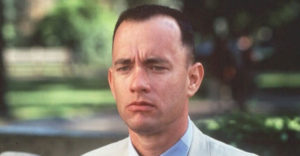
Photo credit: Paramount Pictures.
Hanks has maintained a receding hairline for ages, ever since his Sleepless in Seattle nights, if I’m not mistaken. So while he was the biggest actor on planet earth in the mid 90s, he was a balding man! I doubt the average movie fan even noticed it and just thought he had a naturally high hairline. Talent is what matters, people. Hair, not so much.
Some Motivation, Just for You
For more inspiration, check out all my hair loss psychology and motivation posts.
Wrapping it Up
If you’re a Norwood 3, you’re not alone, and relatively speaking, you’re in a good place. Most people don’t have super acute receding hairline radars.
Yes, I’m serious! Women rarely notice a mild receding hairline, nor do non-balding men. Moderate hair loss often isn’t detectable, either! As a Norwood 3, you still have an abundance of style and treatment options, if desired. When the time comes, you can always buzz your head! But for now, you may as well keep your hair for a while, because as I said earlier, a Norwood 3 hairline is nothing to be ashamed of.
Robert Price is a writer, consumer advocate, and hair loss researcher with thousands of hours of experience in the field. His goal is to keep you out of the hair loss rabbit hole, underworld, or whatever you want to call it. He founded Hair Loss Daily, the unbiased hair loss blog, in 2016. You can learn more about Robert in the my story section of this website.

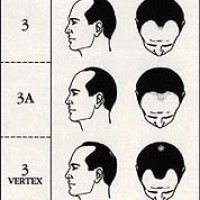



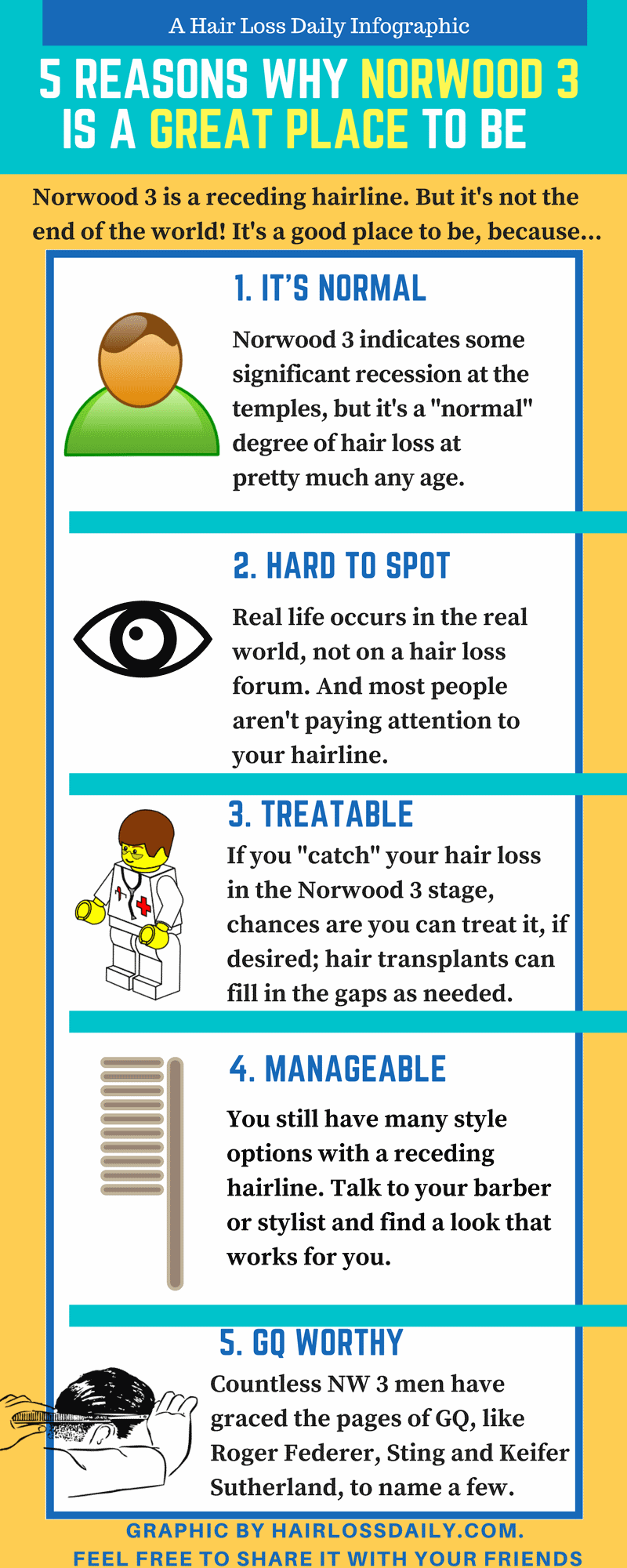

So, there is a possibility that I stay in the same Norwood scale for the rest of my life?, MPHL is not necessarily progressive?, thanks
Yes, that’s right. While hair loss is usually progressive, there are many exceptions to that general rule. Norwood 3 is one class that many men “linger” at for years before progressing to more advanced stages of hair loss. My post, The Bush Family and Balding Genetics – A Case Study may be of interest to you. Generally, the earlier you hit Norwood 3, the more likely you are to go bald, eventually. But there are lots of exceptions to that rule too, as always. Thanks for your comment.
What I find contraddictory with the purely genetic or pure dht related theory, which is the official one is 1. How some people start balding and/or thin or recede faster aftern a certain age, after 35, when testosterone is decreasing but nevertheless they have only then the onsed of hair loss, some people after 50. Some instead start earlier, some very mild like Sting, or in the case of Daniel Day Lewis and practically maintain a Nw 3, especially Day lewis, a quite thick one. On the other hand Woody Allen, who had what looked like a fast paced thinning at crown and recession plus some thinning yet he’s still maintaining the forelock in his 80’s, who would have gambled on that (:?
As I said in my previous reply, hundreds of genes are involved in the balding process. Most men who go severely bald (Norwood 6 or 7) typically begin that process while their DHT levels are still at peak levels (in their teens or 20s). There are exceptions. Woody Allen is definitely a peculiar case. Some men are genetically programmed to go bald later in life, some recede a bit when they’re young without progressing beyond a Norwood 2 or 3. Lifestyle/health choices such as smoking, eating badly, etc., may affect hair loss to some degree, but most experts assert that the phenomenon is inherently genetic. Thanks for your comments, and sorry about the delayed replies!
I’m a case in point. I didn’t go bald until my 50s, but when it happened, it happened fast. All my life I had wished and prayed to go male pattern bald. When it finally happened, at first I panicked, fearing my wife would hate it or I might look awful bald. Those fears turned out to be totally irrational. My wife loves my MPB almost as much as I do. And I love the way I look and I love the way MPB feels. Regrettably, I was genetically programmed to go bald late in life, but it was well worth waiting for. All my life I’ve envied young guys who were going bald or were already bald. But having to wait so long to go bald made the transition much more rewarding, especially as it happened in less than two years. I made up for lost time in a big way and it was a thrilling experience. Kind of scary, too. Be careful what you wish for and pray for … you might just get it. I finally got it and have never regretted it.
Hi, I reply later too if you don’t mind :).
Interesting, I agree the genetical component is a strong one, not disputing that. But my doubt is how it acts and I find perplexing and contraddictory the idea it works like the inverse of growing a beard, as it’s much rarer that a beard grows past after puberty. I know some late bloomers friends who grew one, relatively sparse but more consistent after 28, others who simply kept little to no beard even past 40. While on hair loss the rule seems the inverse.
If the main argument is hair sensitivity to Dht as set in stone, then it’s a different thing to say one is genetically programmed to bald soon or late, as we take into account that such sensitivity varies with age. Does it only increase? seems like not for Woody Allen and if we can argue his forelock was just insensitive like sides (though it thinned a bit before stopping too (: ) then take Bill Murray, who progressed relatively fast past Nw3 when young, to really slow down after Nw 4ish in mature years.
So we can consider these factors (but I think they’re far from the only ones) and cross them: testosterone decrease, sensitivity increasing/not increasing. If sensitivity increases, less Dht would be enough.
Such increase in sensitivity can happen as late as 65 or past it!
Why in the specific norwood patterns?
Is it possible genetic predisposes to a cause, con-cause that interacts with other factors to determine such sensitivity in the norwood area, to Dht?
I’m really far from an arguer, btw, I just think there are angles which we should consider for people or research to approach a possible solution ;).
To Eric below, an another note, goes my support and wish to keep pulling it off with confidence. I’m of the idea that it does not look bad in most cases, indeed, if hair is kept proportionally short/shaved, but what matters is how one feels with it. Wanting to do something about it, moreover is not even mutually exclusive, being a skin health dermatological condition and based largely on immuno response. And it takes off stylistic options and expression.
Sorry for the mistakes, I’m Italian 🙂
Thanks so much for you patience and disponibilty and best wishes.
Male pattern baldness may not be for everyone, but it works wonderfully for me. I love it, my wife loves it and I have gotten very many compliments. Most people who have known me for a long time, including my whole family tell me that I look much better bald than I did with a full head of hair. And I agree with them. The people who cut my hair tell me I look very good bald. One lady who had not cut my hair since before I went bald was surprised when she saw me again after many years and said, “Wow, you’re bald! You look great. You are so lucky! I hope my husband goes bald like you. His hairline is receding, but he still has a long way to go.” I told her how much I love it and what a thrill it was to go bald in less than two years. I get the fringe cut quite short every five or six weeks, so it always looks trimmed and neat. I always come away from a haircut happy and deeply grateful that I went bald. My only regret is that it didn’t happen to me immediately after my wife and I were married 45 years ago. Oh, well, as they say, ‘better late than never.’
Btw, what about Billy Crystal? He basically gained his “5head” (nw3A until ’89?) between early and late 80’s then he kept that or even recoverd, but I can see no turning point for a transplant, at least not what some pointed out, like 2001
1999 https://www.youtube.com/watch?v=uO9HBq9-QUE
2000 https://www.youtube.com/watch?v=aK76GlXddyw
2001 https://www.youtube.com/watch?v=E47HjLyM3ws
It’s basically the same, if any he seems faker in ’99, but it’s just that when he dyes his hair pitch black it looks freakin’ fake :D! be it in 99, 2012, 2006 Salt and pepper suits him better imho.
Good point, I’ve noticed that example as well. I think his hair may have receded a bit in recent years but I could be mistaken — dude is past 70 now I’m pretty sure! Still looking good, and his hair has hung in there for the most part.